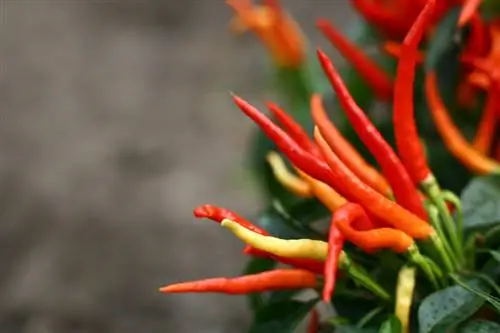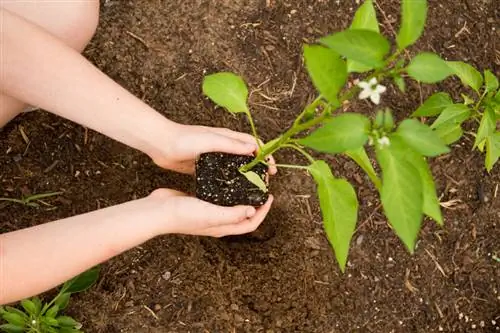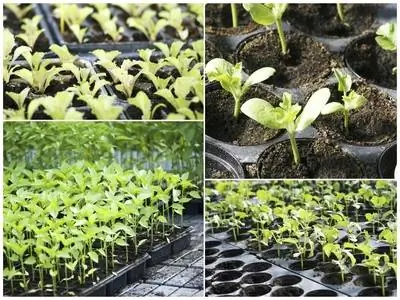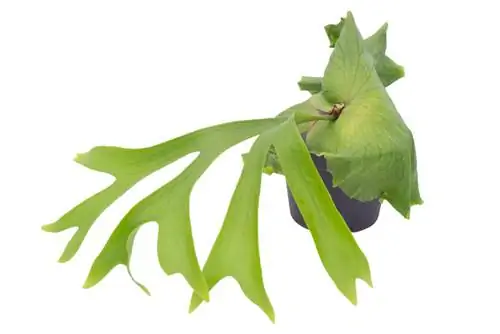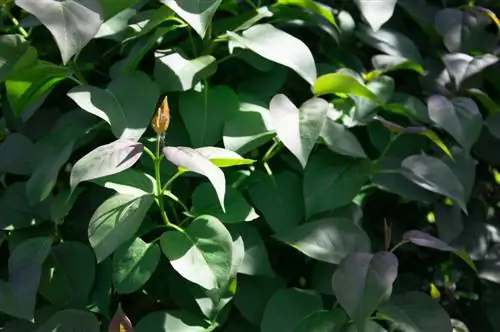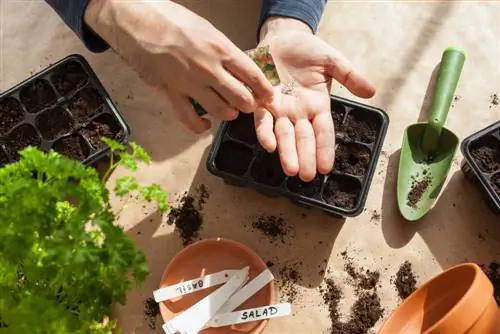- Author admin [email protected].
- Public 2023-12-16 16:46.
- Last modified 2025-01-23 11:19.
As a typical heavy eater, chili has a high need for nutrients. This does not mean giving the plant the entire spectrum of commercially available fertilizers. The focus is on adequate composition and dosage.
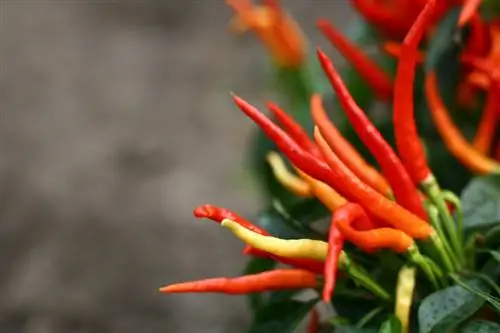
How should you properly fertilize chili?
To properly fertilize chili, potassium, nitrogen, phosphorus, magnesium and calcium should be included in the fertilizer. Organic fertilizers such as nettle manure, mature compost or dried horse manure are recommended. Fertilize after pricking out, during the growth and flowering phase.
The chili is hungry for these nutrients
Chili has completely different fertilizer requirements than typical ornamental plants. It is not only important to promote flowering, but also to encourage abundant fruit production.
- Potassium as the main nutrient for the best development of tasty pods
- Nitrogen for he althy leaves, strong roots and capsaicin for the spicy taste
- Phosphorus for numerous fruits and rich seeds
- Magnesium as an essential component for leaf green formation, yield and quality
If you water chili plants predominantly with rainwater, there is an additional need for calcium. Normal tap water usually contains enough lime to prevent deficiency symptoms.
Organic fertilizers for carefree chili enjoyment
Are you a recreational gardener who wants to know exactly what you eat? Then you are right on trend. Organic fertilizers are increasingly on the rise. Nettle manure, for example, is an excellent foliar fertilizer.
Ripe compost has become an integral part of the home garden. When administered regularly, it provides your chili plants with all the important nutrients. In addition, horse manure is experiencing a renaissance in the vegetable patch. When dried, horse manure is in no way inferior to chemical fertilizers.
Begin fertilizing after pricking out
Chili does not receive any additional nutrients during sowing. This makes sense because the seedlings work even harder to form roots. After pricking out, height growth begins, combined with an increasing need for nutrients.
- Add special long-term fertilizer to the bed soil at 40-80 grams per square meter
- alternatively, mix in well-rotted garden compost with horn shavings at your discretion
- Administer liquid fertilizer (€9.00 on Amazon) at 2-3 grams per liter in the planter every 14 days
- fertilize every 8 days during and after flowering and add primary rock powder
Fertilizers of any kind must never be applied to dried soil. So that the sensitive roots are not damaged, water the surface a little beforehand.
Tips & Tricks
If you want to cultivate chili in the bed, the composition of the soil may be of particular interest. Special laboratories carry out a detailed soil analysis in conjunction with valuable information on efficient fertilization.

